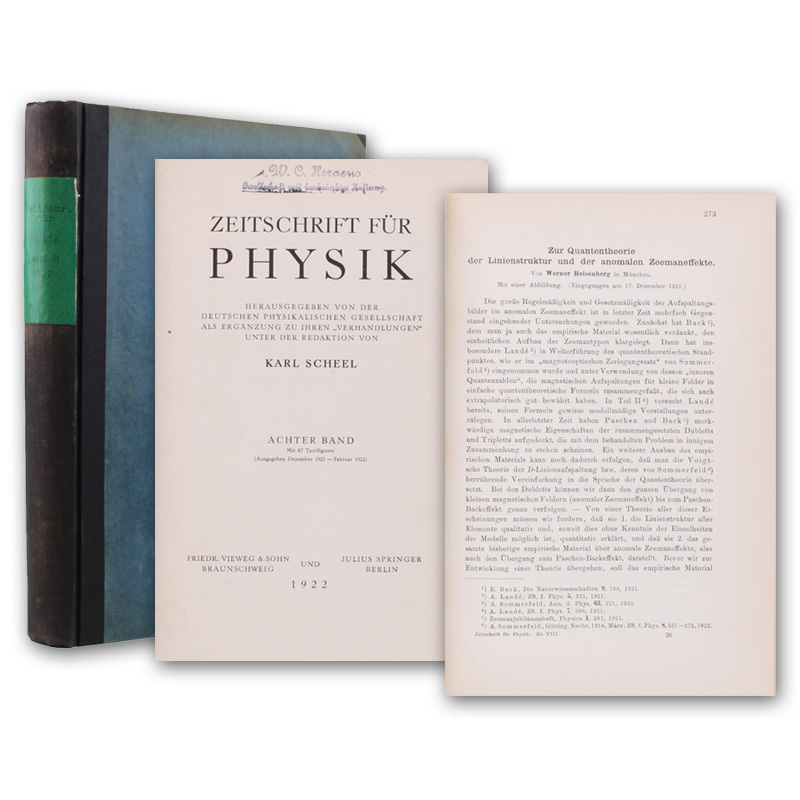106295-02
Zur Quantentheorie der Linienstruktur und der anomalen Zeemaneffekte. SS. 273-297. In: Zeitschrift für Physik. Band 8.
Berlin, Springer, 1922. - (23 x 15,5 cm). IV, 419 S. Mit 87 Abbildungen. Halbleinwandband der Zeit.
Erste Ausgabe. - "During his studies with Sommerfeld, Heisenberg became acquainted not only with Pauli... but also with the intricacies of the anomalous Zeeman effect, the inexplicable splitting of atomic spectral lines into more than the expected three components in a magnetic field. In his first semester, Heisenberg offered a classification of the anomalous lines using thoroughly unorthodox half-integral quantum numbers. In 1922 he publicly displayed his audacity - and his intuition - in his first published paper, which offered a model for the Zeeman effect that described all of the known data in terms of the couplings between valence electrons and the remaining atomic 'core' electrons. The model, however, violated many of the basic principles of quantum theory and classical mechanics. It thus served both as the basis for most of the subsequent work on the Zeeman effect until the advent of electron spin and as the first indication of the radical changes required for solving the quantum riddle" (DSB). - Stempel auf Titel. Einband minimal berieben, sonst sauber und gut erhalten. - DSB 17, 394
Zur Quantentheorie der Linienstruktur und der anomalen Zeemaneffekte. SS. 273-297. In: Zeitschrift für Physik. Band 8.
Berlin, Springer, 1922. - (23 x 15,5 cm). IV, 419 S. Mit 87 Abbildungen. Halbleinwandband der Zeit.
Erste Ausgabe. - "During his studies with Sommerfeld, Heisenberg became acquainted not only with Pauli... but also with the intricacies of the anomalous Zeeman effect, the inexplicable splitting of atomic spectral lines into more than the expected three components in a magnetic field. In his first semester, Heisenberg offered a classification of the anomalous lines using thoroughly unorthodox half-integral quantum numbers. In 1922 he publicly displayed his audacity - and his intuition - in his first published paper, which offered a model for the Zeeman effect that described all of the known data in terms of the couplings between valence electrons and the remaining atomic 'core' electrons. The model, however, violated many of the basic principles of quantum theory and classical mechanics. It thus served both as the basis for most of the subsequent work on the Zeeman effect until the advent of electron spin and as the first indication of the radical changes required for solving the quantum riddle" (DSB). - Stempel auf Titel. Einband minimal berieben, sonst sauber und gut erhalten. - DSB 17, 394
420 €

